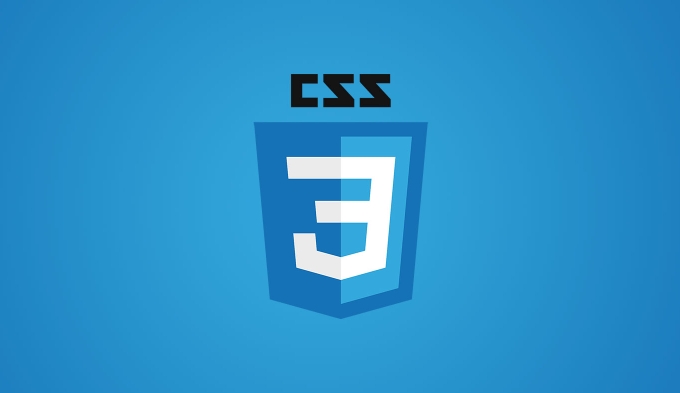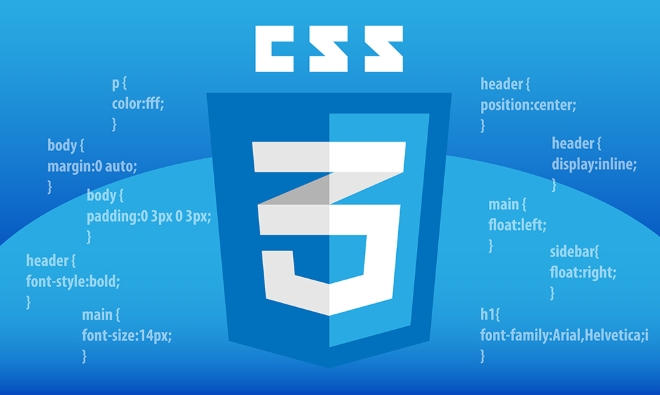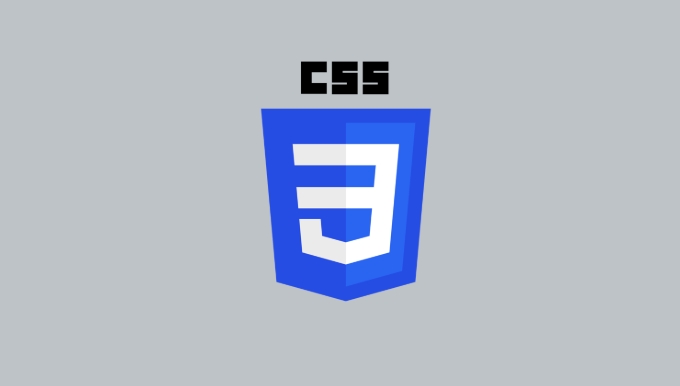Describe the `:has()` pseudo-class (Parent selector)
Jul 15, 2025 am 12:32 AMThe :has() pseudo-class in CSS allows targeting a parent element based on its child elements. It works by using the syntax parent:has(child-selector) to apply styles conditionally. For example, div:has(img) applies styles to a div containing an image. Multiple selectors can be used with commas like div:has(img, p.special). Common use cases include styling containers, form validation feedback, and indicating menu items with submenus. Browser support is available in modern browsers like Chrome, Safari, and Edge, though Firefox lacks support as of late 2024. Considerations include performance impact, non-dynamic behavior, and the need for fallbacks in unsupported environments.

The :has() pseudo-class is a powerful CSS selector that allows you to target a parent element based on the presence of specific child elements or conditions within it. Before :has() was introduced, there was no native way in CSS to select a parent based on its children — developers had to rely on JavaScript or add extra classes manually. Now, with :has(), this becomes possible using just CSS.

How to Use :has() in CSS
:has() works by taking a selector as an argument and matching any element that contains at least one matching element inside it. The syntax looks like:
parent:has(child-selector) {
/* styles */
}For example, if you want to style a <div> only when it contains an <img src="/static/imghw/default1.png" data-src="https://img.php.cn/upload/article/000/000/000/175251076578590.jpeg" class="lazy" alt="Describe the `:has()` pseudo-class (Parent selector)" >, you can write:

div:has(img) {
border: 2px solid green;
}This will apply the border only to those div elements that directly contain an image tag somewhere inside them.
You can also chain multiple selectors inside :has() using commas, like:

div:has(img, p.special) {
background-color: #f0f0f0;
}This rule will match any div that has both an img and a p with class special.
Common Use Cases for :has()
- Styling containers conditionally: For example, applying different padding or margins to a card layout only when it includes a video.
- Form validation feedback: Highlighting a form group when a required input is invalid.
- Menu items with submenus: Applying arrows or indicators only to menu items that have nested lists.
Here's a real-world example:
li:has(ul) {
position: relative;
padding-right: 20px;
}
li:has(ul)::after {
content: ' ?';
position: absolute;
right: 5px;
}This adds a dropdown indicator to any list item that contains a submenu (<ul></ul>), making your navigation UI more intuitive without adding extra markup.
Browser Support and Considerations
As of now, :has() is supported in most modern browsers like Chrome (v105 ), Safari (v15.4 ), and Edge (v106 ). Firefox support is still pending as of late 2024, so it’s important to check compatibility if you're targeting a broad audience.
Also, keep in mind:
-
:has()can affect performance if used excessively or with complex selectors. - It's not dynamic in the same way JavaScript is — it only evaluates at render time.
- Avoid using it in critical layouts unless fallbacks are in place for unsupported browsers.
If you're using it in production, consider feature detection or progressive enhancement strategies to ensure your site remains usable everywhere.
Basically, :has() gives CSS a long-missing tool for conditional styling based on structure. While it’s not yet universally supported, it's definitely worth experimenting with and planning for future use.
The above is the detailed content of Describe the `:has()` pseudo-class (Parent selector). For more information, please follow other related articles on the PHP Chinese website!

Hot AI Tools

Undress AI Tool
Undress images for free

Undresser.AI Undress
AI-powered app for creating realistic nude photos

AI Clothes Remover
Online AI tool for removing clothes from photos.

Clothoff.io
AI clothes remover

Video Face Swap
Swap faces in any video effortlessly with our completely free AI face swap tool!

Hot Article

Hot Tools

Notepad++7.3.1
Easy-to-use and free code editor

SublimeText3 Chinese version
Chinese version, very easy to use

Zend Studio 13.0.1
Powerful PHP integrated development environment

Dreamweaver CS6
Visual web development tools

SublimeText3 Mac version
God-level code editing software (SublimeText3)

Hot Topics
 What is 'render-blocking CSS'?
Jun 24, 2025 am 12:42 AM
What is 'render-blocking CSS'?
Jun 24, 2025 am 12:42 AM
CSS blocks page rendering because browsers view inline and external CSS as key resources by default, especially with imported stylesheets, header large amounts of inline CSS, and unoptimized media query styles. 1. Extract critical CSS and embed it into HTML; 2. Delay loading non-critical CSS through JavaScript; 3. Use media attributes to optimize loading such as print styles; 4. Compress and merge CSS to reduce requests. It is recommended to use tools to extract key CSS, combine rel="preload" asynchronous loading, and use media delayed loading reasonably to avoid excessive splitting and complex script control.
 How can CSS be used to implement dark mode theming on a website?
Jun 19, 2025 am 12:51 AM
How can CSS be used to implement dark mode theming on a website?
Jun 19, 2025 am 12:51 AM
ToimplementdarkmodeinCSSeffectively,useCSSvariablesforthemecolors,detectsystempreferenceswithprefers-color-scheme,addamanualtogglebutton,andhandleimagesandbackgroundsthoughtfully.1.DefineCSSvariablesforlightanddarkthemestomanagecolorsefficiently.2.Us
 Can you explain the difference between em, rem, px, and viewport units (vh, vw)?
Jun 19, 2025 am 12:51 AM
Can you explain the difference between em, rem, px, and viewport units (vh, vw)?
Jun 19, 2025 am 12:51 AM
The topic differencebetweenem, Rem, PX, andViewportunits (VH, VW) LiesintheirreFerencepoint: PXISFixedandbasedonpixelvalues, emissrelative EtothefontsizeFheelementoritsparent, Remisrelelatotherootfontsize, AndVH/VwarebaseDontheviewporttimensions.1.PXoffersprecis
 External vs. Internal CSS: What's the Best Approach?
Jun 20, 2025 am 12:45 AM
External vs. Internal CSS: What's the Best Approach?
Jun 20, 2025 am 12:45 AM
ThebestapproachforCSSdependsontheproject'sspecificneeds.Forlargerprojects,externalCSSisbetterduetomaintainabilityandreusability;forsmallerprojectsorsingle-pageapplications,internalCSSmightbemoresuitable.It'scrucialtobalanceprojectsize,performanceneed
 Does my CSS must be on lower case?
Jun 19, 2025 am 12:29 AM
Does my CSS must be on lower case?
Jun 19, 2025 am 12:29 AM
No,CSSdoesnothavetobeinlowercase.However,usinglowercaseisrecommendedfor:1)Consistencyandreadability,2)Avoidingerrorsinrelatedtechnologies,3)Potentialperformancebenefits,and4)Improvedcollaborationwithinteams.
 What are the key differences between inline, block, inline-block, and flex display values?
Jun 20, 2025 am 01:01 AM
What are the key differences between inline, block, inline-block, and flex display values?
Jun 20, 2025 am 01:01 AM
Choosing the correct display value in CSS is crucial because it controls the behavior of elements in the layout. 1.inline: Make elements flow like text, without occupying a single line, and cannot directly set width and height, suitable for elements in text, such as; 2.block: Make elements exclusively occupy one line and occupy all width, can set width and height and inner and outer margins, suitable for structured elements, such as; 3.inline-block: has both block characteristics and inline layout, can set size but still display in the same line, suitable for horizontal layouts that require consistent spacing; 4.flex: Modern layout mode, suitable for containers, easy to achieve alignment and distribution through justify-content, align-items and other attributes, yes
 What is Autoprefixer and how does it work?
Jul 02, 2025 am 01:15 AM
What is Autoprefixer and how does it work?
Jul 02, 2025 am 01:15 AM
Autoprefixer is a tool that automatically adds vendor prefixes to CSS attributes based on the target browser scope. 1. It solves the problem of manually maintaining prefixes with errors; 2. Work through the PostCSS plug-in form, parse CSS, analyze attributes that need to be prefixed, and generate code according to configuration; 3. The usage steps include installing plug-ins, setting browserslist, and enabling them in the build process; 4. Notes include not manually adding prefixes, keeping configuration updates, prefixes not all attributes, and it is recommended to use them with the preprocessor.
 How can you animate an SVG with CSS?
Jun 30, 2025 am 02:06 AM
How can you animate an SVG with CSS?
Jun 30, 2025 am 02:06 AM
AnimatingSVGwithCSSispossibleusingkeyframesforbasicanimationsandtransitionsforinteractiveeffects.1.Use@keyframestodefineanimationstagesforpropertieslikescale,opacity,andcolor.2.ApplytheanimationtoSVGelementssuchas,,orviaCSSclasses.3.Forhoverorstate-b






